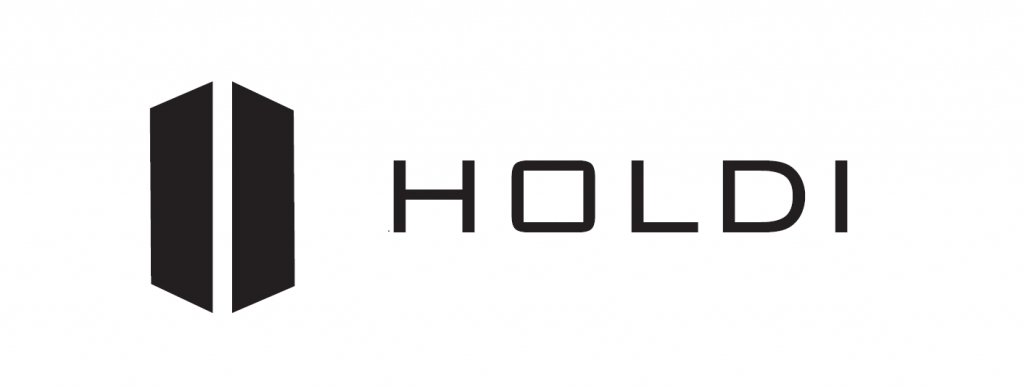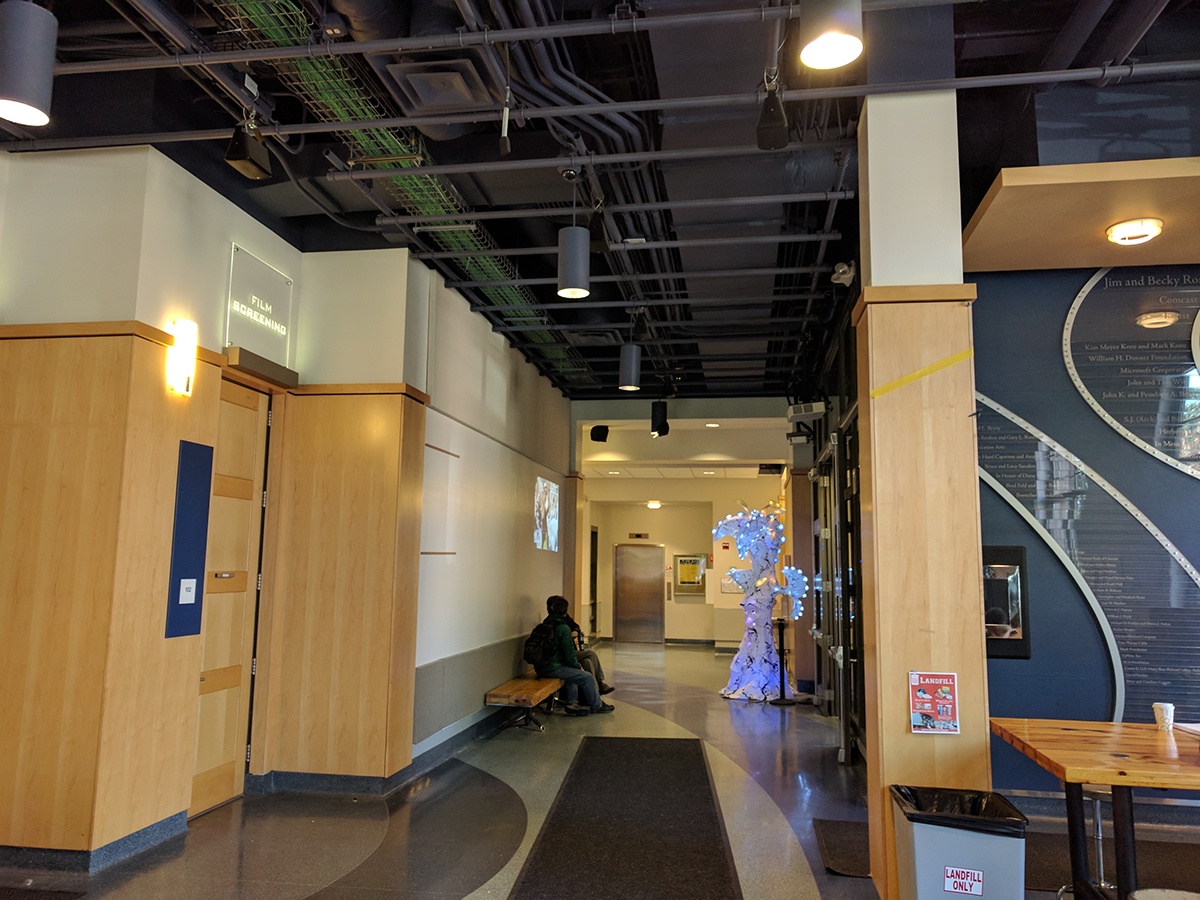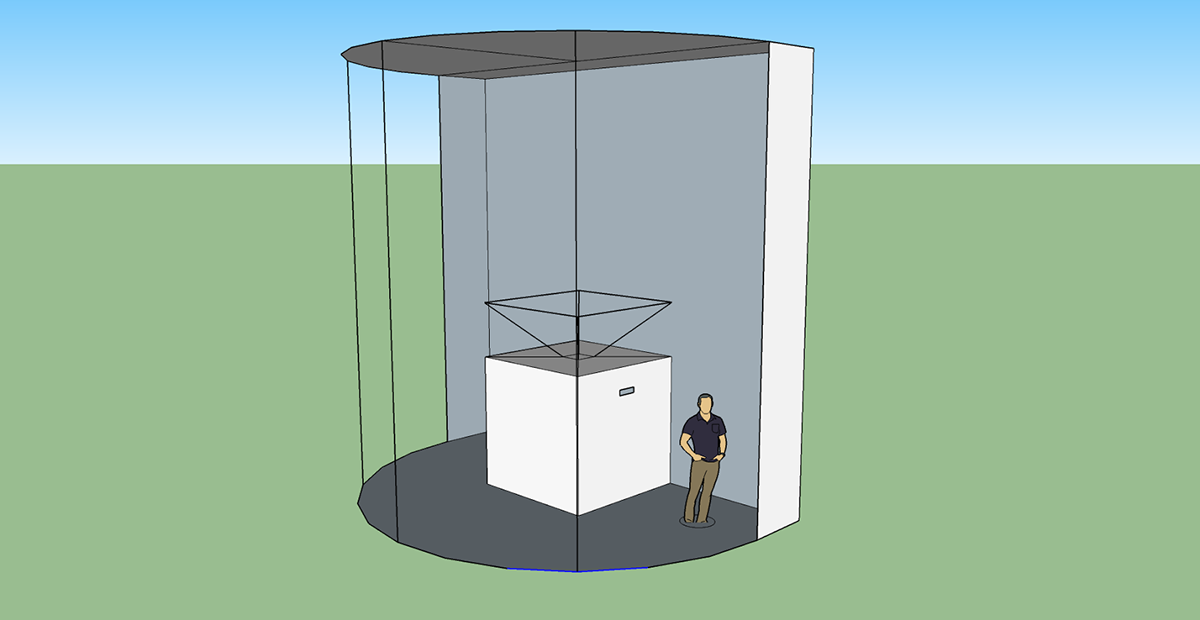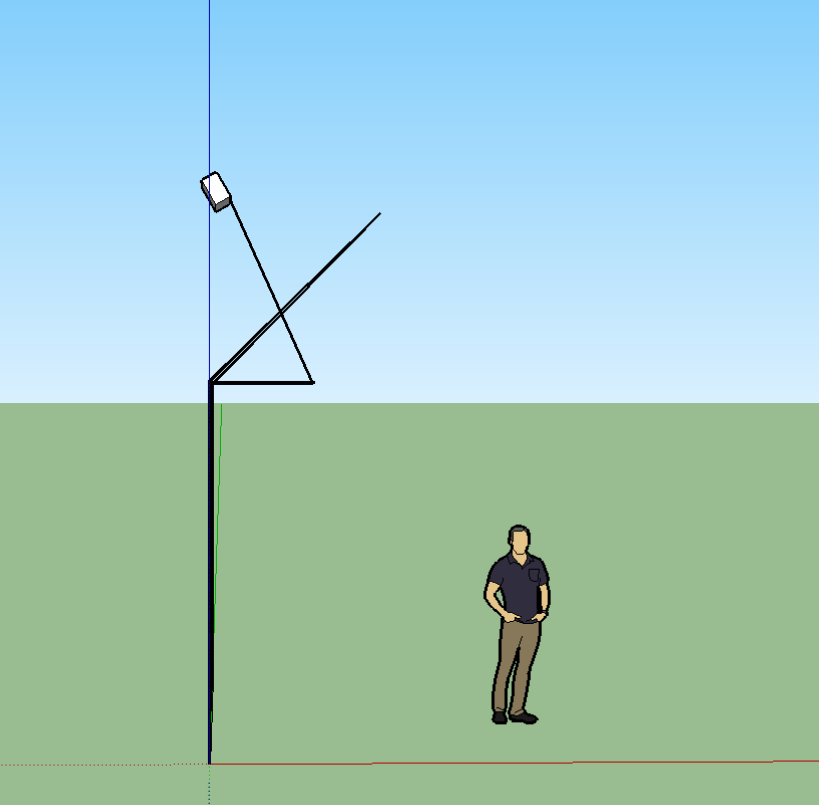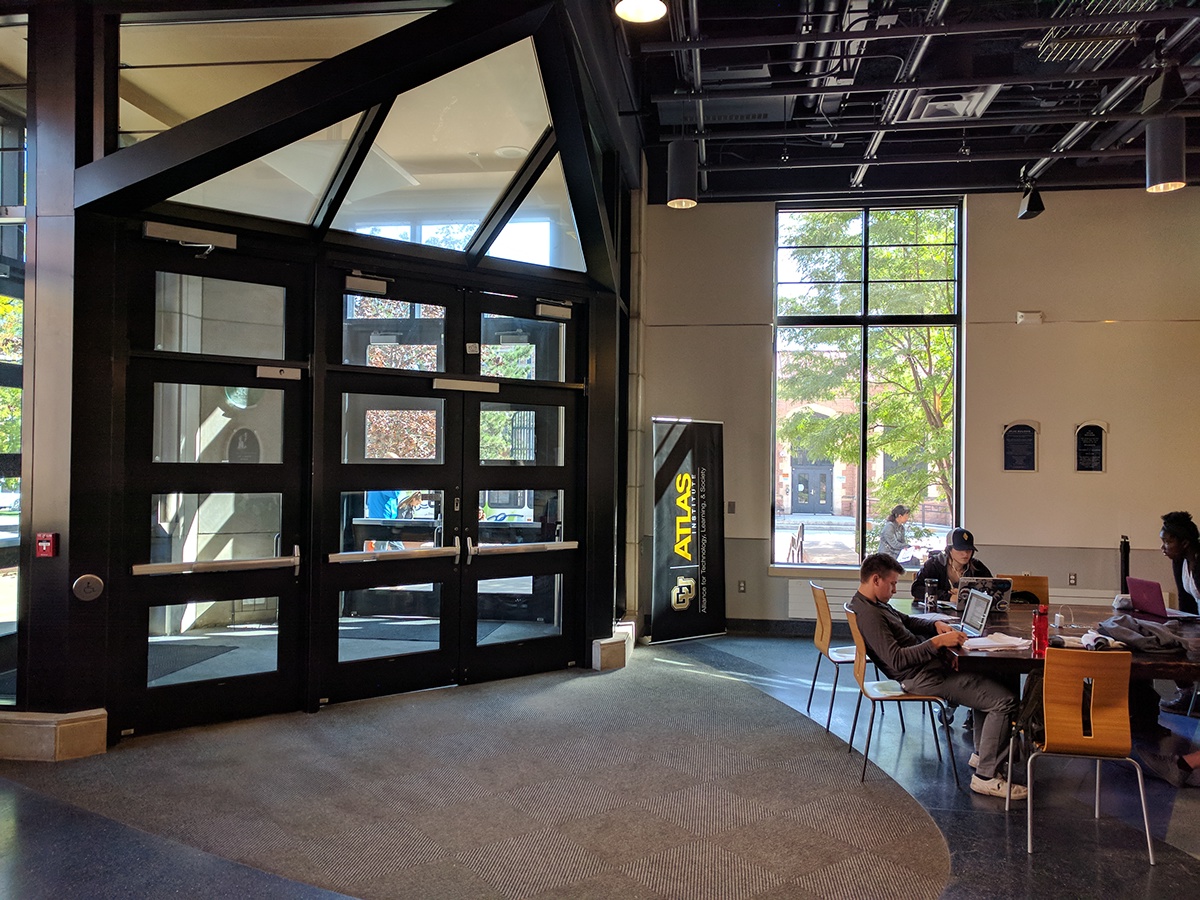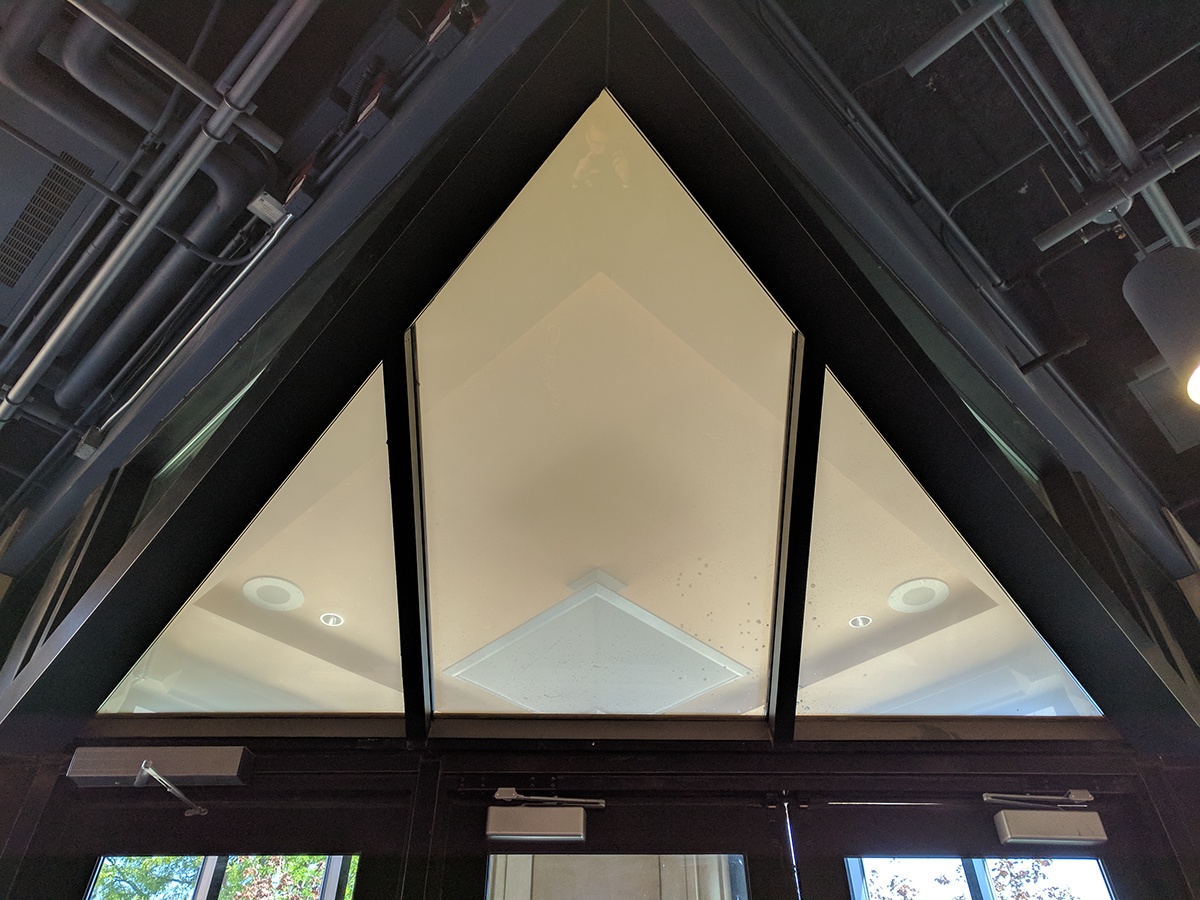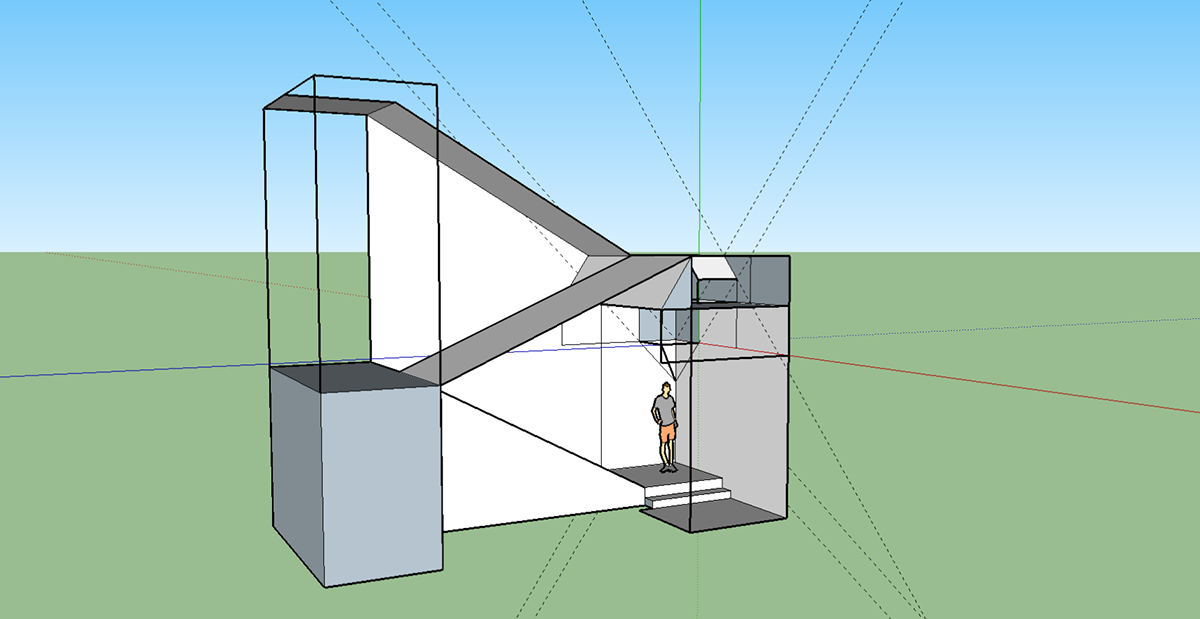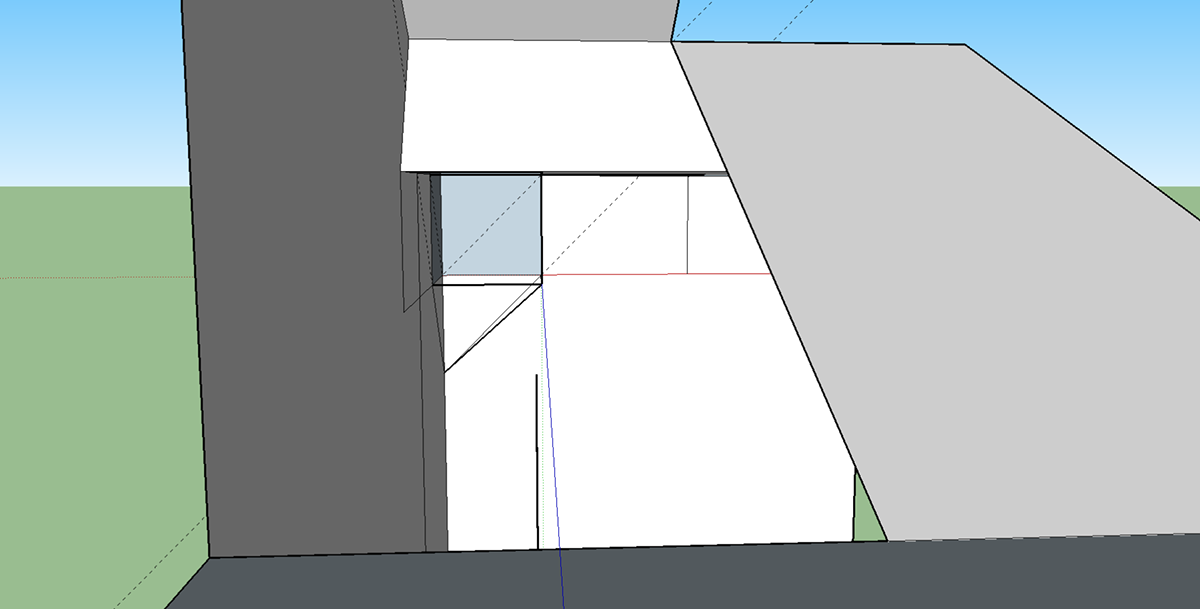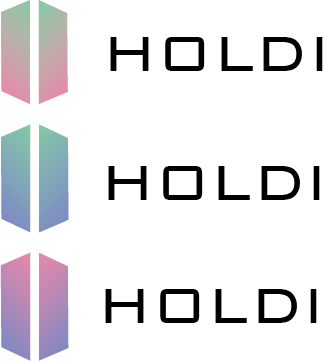Holdi (short for holographic display) is a proposed interactive “holographic” installation. It was commissioned by the ATLAS Institute at the University of Colorado Boulder to bring people into the building and showcase the kind of research going on. From the beginning, the idea was to create an installation that captured a user’s image and replayed it back “holographically” using the Pepper’s ghost illusion. The plan was to build it here, in the lobby of the ATLAS Institute:
Below is the first iteration of the installation. Because of the varying light in the lobby, a curtain was added to the design to block out ambient light in the lobby. The circle that the figure is standing on represents a 3D scanning rig that would capture the user’s image using an XBOX Kinect embedded in the installation itself.
The second iteration of the design tried to incorporate a window that was already in place in the lobby.
Unfortunately, upon further investigation the window proved to be unfeasible, and this iteration was scrapped.
The final iteration of the installation tucked the display away in a staircase, away from the always variable light in the lobby. A false ceiling was incorporated to hide the optical equipment making the installation work.
After 3D scanning proved unfeasible due to the export time, the following system was developed. It incorporates both sound and light cues to direct the user’s attention where it needs to be. Once the user presses the button, a light travels down a string of neopixels to the camera while an audio cue tells the user instructions. Following a 10 second capture window, another light travels down another string of neopixels directing the user to the holographic display, accompanied by an additional audio cue.
Here’s a model of the “Holdi Button” that would be embedded in the wall for users to initiate the capture sequence.
Below is the first version of graphics intended to be displayed inside Holdi. Following a design critique, the graphics were edited to make them seem more glitchy to more closely match the audio cues.

